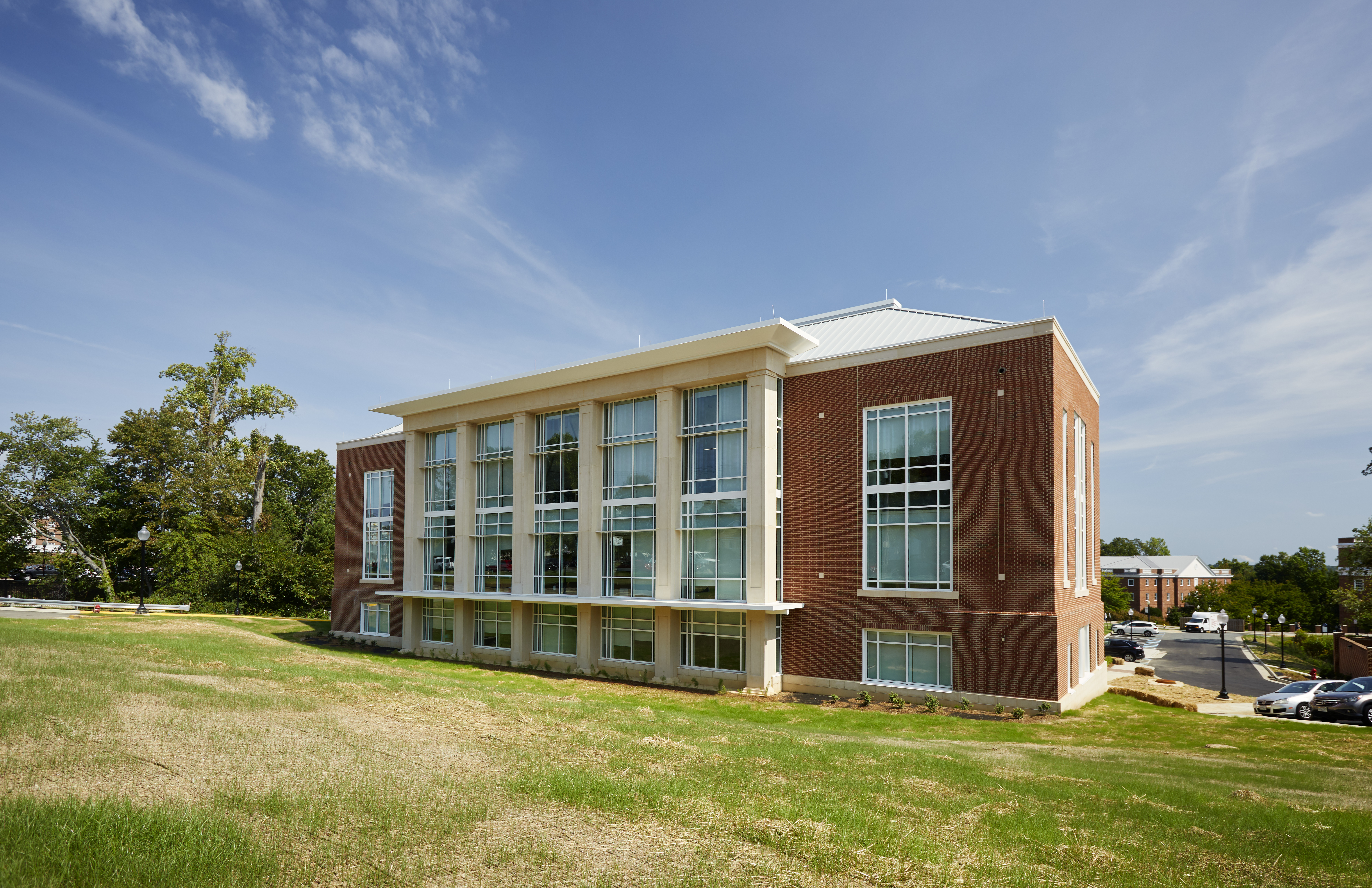Thanh-Binh Duong’s research on microplastics could be vital to the health of the Chesapeake Bay. Carmen Cantrell studies hydrology on the hunt for dangerous contaminants. The two UMW seniors are among scores of Mary Washington students whose important undergraduate research stands to reach new heights, thanks to the Jepson Science Center’s recent renovation.

The project added more than 42,000 square feet, 16 new labs and three classrooms to the building, along with 30,000 square feet of renovations. A new three-story wing with floor-to-ceiling windows gives passersby a view of geology labs, physics classrooms, mapping courses and other examples of science in action. Inspired in part by the boiler plant across the street and strikingly different from other campus buildings, the modern new wing is meant to put “science on display” on College Avenue.
Almost all of the nearly $28 million cost for the upgrades was covered with funds allocated by the Virginia General Assembly, according to Project Manager Leslie Johnson.
“The past few years we’ve been kind of cramped,” Department of Biology Chair Lynn Lewis said of the original Jepson Science Center, which opened in 1998. “I think this new facility will give a lot of people more access to lab space.”
Light pours into classrooms and labs, while curtains that drop with the touch of a button keep sunshine from raising temperatures during sensitive experiments. The building’s new interior design – labs connect to classrooms throughout – allow faculty to engage in creative teaching methods and enhance the student experience. Interaction spaces and conference tables built into corridors help promote collaboration and communication skills today’s employers seek.
“[Students] learn from each other. It’s an interactive process,” said Geology Professor Grant Woodwell. “You like to see students working as teams. That really reflects how they are likely to be working in the workplace.”
Proximity locks turn ID cards into lab keys. With locked labs, students enrolled in a class can leave out materials and conduct longer-term projects. A loading dock accommodates teams who take boats onto waterways to collect samples. An institutional-sized version of a “mud room” provides a place to stage muddy gear and preserve samples from field work in a refrigerated space. Fume hoods added to labs and lab prep rooms improve safety, as do the physics department’s new laser labs that feature a system ensuring no one can accidentally enter a room during a laser activity.
Landscaping coming this fall will reflect lessons learned in the classroom – especially in the new conservation biology major that debuts this year. The hillside leading down from College Avenue, for example, will be planted with native meadow grasses and pollinator plants as a no-mow riparian buffer to reduce stormwater runoff and protect water quality.
Lewis and Woodwell, who’ve been at Mary Washington since science classes were based in Combs Hall – before the original Jepson Science Center opened – say that, paired with smaller classes and UMW’s low student-faculty ratio, the new facility will vastly improve the undergraduate research experience.
“It gives us the opportunity to expose our students to more sophisticated instruments than they would typically have at a large research university,” Woodwell said. “I think our students have a real advantage from that standpoint.”
Duong, an earth and environmental sciences major who aspires to graduate work, agrees, citing scientific equipment that will vastly improve the quality of her research.
“As an undergraduate, I have already been able to conduct my own independent studies as well as attend and present my research at local and national conferences,” she said. “These experiences have allowed me to build a strong workflow and skillset, which will set me up for success in graduate school and beyond.”
Read Emily Freehling’s story about the Jepson Science Center expansion in the fall/winter 2019 issue of University of Mary Washington Magazine.





